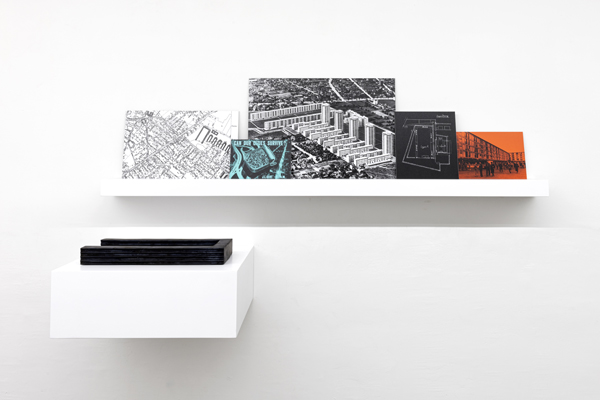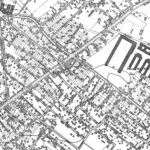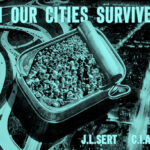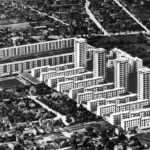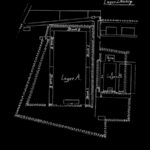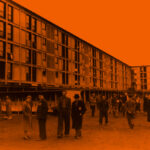2022
Wooden shelves, prints on aluminium and bronze model.
162 x 65 x 58 cm
Edition of 3
Josep Lluís Sert in his well-known book Can our Cities Survive? An ABC of Urban Problems, their Analysis, their Solutions – which collects and theorises all the elements of the famous Athens Charter (1934) agreed at the IV CIAM (International Congress of Modern Architecture) led by Le Corbusier – presents the housing complex known as the Cité de la Muette as the desirable model for modern living, a “garden city” that combines affordable housing with communal living.
This complex of social housing for the working class, – designed by the architects Marcel Lods and Eugène Beaudouin, with the collaboration of Jean Prouvé and built between 1931 and 1934 in Drancy, in the northeast of Paris –, it is considered one of the first large housing projects designed according to CIAM principles.
In 1941 the Drancy concentration camp was created in a large U-shaped building that is part of the Cité de la Muette complex. From August 1941 to August 1944, the Drancy concentration camp was the lynchpin of the anti-Semitic expulsion policy in France. This camp was for three years the main internment center for Jews before they were deported to the Nazi extermination camps, most of them in Auschwitz.
